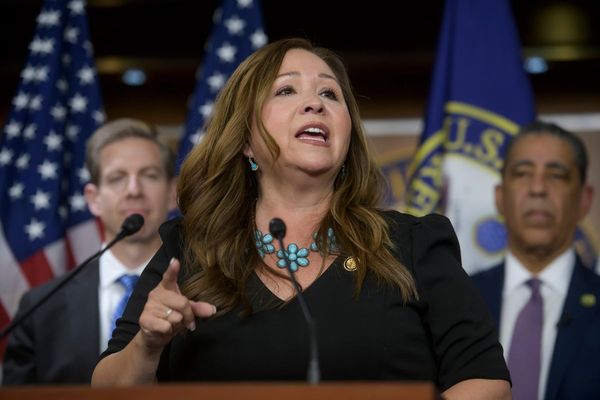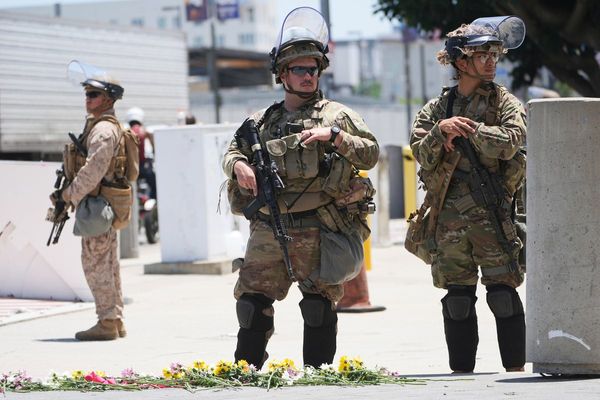
The Coalition’s proposed cuts to Australia’s permanent migration would require Peter Dutton to legislate to allow a cap on partner visas, a migration expert has warned.
Abul Rizvi, a former deputy secretary of immigration, believes the current planning level for partner visas, introduced by the Coalition and continued by Labor, is acting as an “illegal” de facto cap and would need to be removed.
The Migration Act states that the partner and child visa categories are demand-driven but, in practice, only 40,500 partner visas are given a year, meaning surplus applications result in longer wait times for applicants.
The backlog grew as high as 96,361 during the Coalition’s term in government, although it was reduced to 64,111 by 2020-21. By September 2024, the number had grown again to 76,128.
Rizvi told Guardian Australia the backlog was “growing steadily”.
“The government cannot legally allow that to continue, to say ‘we’re processing on a demand-driven basis’, but to do so so slowly that the backlog keeps growing.
“The government has said that is a notional number, not a cap. But to me it quacks and walks like a duck – they’re capping it.”
In November parliament’s audit committee recommended that partner and child visas become “truly demand driven with reasonable waiting times, excising these streams from the annual headline permanent migration cap”.
The inquiry was initially led by the Labor MP Julian Hill, who had lobbied the Australian National Audit Office to probe family visa processing when Labor was in opposition, and then after his appointment as assistant citizenship minister in August by the former Indigenous affairs minister Linda Burney.
The report found that the home affairs department had slashed the partner visa backlog partly as a “genuine response” to the ANAO audit but “primarily due to the allocation of additional staff”. More than 70,000 partner visas were processed in 2020-21.
David Green and his partner were beneficiaries of efforts to reduce the backlog. After applying for a partner visa in 2017 and marrying in March 2019, Green’s Swedish wife was “suddenly” granted a domestic partner visa and permanent residency shortly after the 2019 election.
Before that, Green’s partner was on a temporary bridging visa sponsored by her employer, which made her “feel like she couldn’t leave the job and get something else, in case it might affect the application”.
“[The wait] felt maybe a bit long but I’m sure there were others from less western countries that were waiting longer,” he said.
“The whole thing felt a bit cynical … Like the government were trying to keep numbers down even while people were already living here.”
The audit committee inquiry called on the government to respect “not just the letter but the spirit” of the law that does not permit partner visas to be capped, and “make real the illusory promise of a demand driven system”.
The report noted that concerns about the impact of immigration on housing were “simply nonsensical in relation to partner visas as the spouse or partner lives in the same house (and usually bedroom) as their Australian partner”.
Presented as a housing measure to free up 100,000 houses, Dutton pledged in his budget reply to cut permanent migration annually by 25% from 2024-25, from 185,00 to 140,000 for the first two years, stepping back up to 150,000 and then 160,000 over the next two.
Rizvi said that “given how big the backlog and application rate is, I think Dutton would have no choice but to go back to parliament” to ask for the power to cap partner visas, which was attempted unsuccessfully by Labor in 1989 and the Coalition in 1996-97.
In April 2023 Guardian Australia revealed the average wait to get a temporary partner visa was between eight and 13 months, but years in some cases depending on country of origin.
The department denies that planning levels breach the Migration Act. A spokesperson said “the child and partner programs are demand driven … the planning levels for these programs are nominal and are not subject to a legislative cap”.
“All visa programs, regardless of whether there is a planning level in place, are subject to limited resourcing which can result in delays in application assessment, especially in periods of increased demand,” they said.
Guardian Australia approached Dutton for comment.







